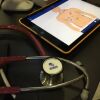The facts are undeniable: EMS providers have a high rate of back injuries. The statistics are disturbing. One in four suffer a career-ending injury in their first four years on the job.
According to NAEMT, almost one in two providers have sustained a back injury. Lifting causes 62 percent of medic injuries, and back strain is the cause of 78 percent of the compensation paid for lost productivity.
What to do about it is a whole lot less clear. We have seen a lot of technological solutions, going back to lifting belts that were once popular. Let’s not forget those once popular back support braces were eventually shown to have little impact on injury rates.
Today we have specialized bariatric equipment including transfer devices, power-stretchers, loading ramps and winch systems. We just don’t know much yet about their impact on injury rates.
I am confident that some of these devices will prove effective in reducing injuries. We need some decent research science on which ones really help. I suspect it will be a careful combination of devices, combined with aggressive harm reduction strategies.
There are some great patient-handling products available that seem to really help. I have written about some great simple ideas here, and more specialized bariatric devices here.
Using these products can sometimes involve ugly trade offs. A power stretcher weighs more. A ramp or lift takes more time.
My single biggest concern is what happens when we use our backs a lot less. I have never had an on-the-job back injury. Yes, I have personally experienced a lot of back pain. But it had nothing to do with EMS, and everything to do with a parachute jump gone wrong.
I liked lifting patients, and saw it as a daily way to keep my aching back strong. What I learned through the years is that there are four main reasons for back pain. These are my personal conclusions based on 20 years of back pain and 30 years around EMS.
EMTs and paramedics are often not taught how to lift correctly. Learn how to lift from a professional. An exercise physiologist, professional athletic trainer, a power lifter or body builder knows how to lift correctly.
Find one in your nearest gym, tell them what you do and ask for their help. You would be astonished at what you can learn. Using proper technique can make lifting much safer and easier.
A lot of the ancient medics can probably teach you a lifting trick or two. In my early years I was fortunate to work with some great old-timers.
They taught more manual moving, using many specialized techniques now long forgotten. Pull one aside, ask for their ideas and practice them.
Next, spend some time in the gym. This is a physical job. If you can’t move patients you can’t do the whole job. If you can’t do 15 sit-ups, your core cannot protect your back. You are eventually going to get hurt. We need to train for what we do. Bryan Fass writes excellent tips for improving fitness in EMS.
Lose some weight. If you carry around 50 extra pounds, all your patients are 50 pounds heavier. America has changed a lot in the past 20 years. Once there were only one or two guys in my squad that were heavy; now it often seems a new normal.
As professional athletes, we should control our weight. We must be able to do our jobs without getting hurt or causing somebody else to get hurt. The combination of both rescuers and patients getting heavier simultaneously is deadly. There must be something done, before we hit our physical limits.
EMS providers are prone to dangerous eating habits. Consuming 42 pounds of high-fructose corn syrup each year is not compatible with a life-long EMS career. Living on fast-food burgers and caffeine aggravates stress while causing weight gain.
The smart money is to take real food to work with you. Pack a lunchbox or small cooler with protein and fresh vegetables. You will soon feel better and see results.
Cutting out just four fast-food meals a week is probably equal to a month’s total calories for many people in the developing world.
When you go to the grocery store, shop around the outside of the store. The walls are where the big electric lines run, and it is where you will find the refrigerated foods.
Dash into the aisle for hot sauce and coffee, and then get the heck out fast. Your weight is based on what makes its way into your cart. Eat out of the refrigerator and not the pantry.
Last, we need to seriously address stress. EMS is a very stressful occupation. Exercise is one great way to deal with it but there are many others.
Hobbies, pets, social activities, volunteering (outside of EMS), and an active church life can all help. We really need to learn how to chill out and I’ll tell you why.
Many cases of back pain are stress related. After my back injury I had acute pain a few months, followed by chronic low back pain for the next 20 years.
Then I got a divorce and my back pain disappeared. If you can reduce your stress levels, you can manage one common cause of chronic back pain.
If we don’t react effectively to the causes of back pain and injury in EMS, we will soon have a virtual plague on our hands. The costs to our departments and communities will be staggering.
If it turns out hovering machines are the only safe way to move people, we could all lose our jobs.
This is a problem we can manage. EMS agencies can implement effective strategies for reducing back injuries and improving wellness.Individuals can do a lot on their own, to increase their EMS career longevity while improving their quality of life.


